Great Lakes SCUBA Diving Equipment
It can take a lot to make a shipwreck search or dive a success. Each expedition is unique, and the diving equipment is chosen to fit that day’s specific goals. If you have ever wondered what it takes to capture high quality photos and video of sunken ships, this will give you some idea of what’s involved when Blueyes Below goes Great Lakes SCUBA diving.
These are all important pieces of equipment that I use in order to reach my targets and bring back videos and photographs. If you haven’t been Great Lakes SCUBA diving before, this is a look into how much “Stuff” I use to make the content at Blueyes Below valuable. This isn’t everything I use, either. Feel free to contact me if you want to know more.
24′ 1988 Penn Yan Avenger 235
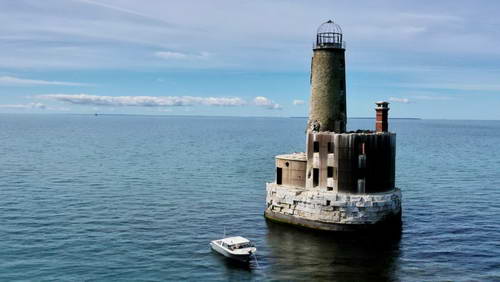
Primarily used as a work platform for diving and ROV operations. The 36v I-pilot system installed on the bow holds the vessel’s position without anchoring. This is vital for filming and exploration in deep water where anchoring is impractical or could cause damage. She is also equipped with an Aluminum dive ladder and platform at the rear, Raymarine sonar and chart plotter, hardtop and rear curtain enclosure with heat for all-weather operations.
Raymarine Equipment
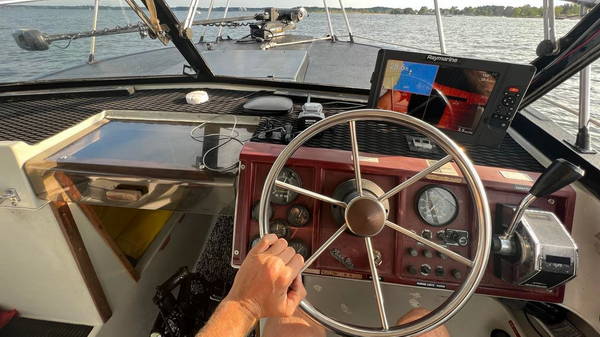
Raymarine Element 12″ and 9″ Chart Plotters. Multi-function display allows charting and side scan / down scan sonar operation simultaneously to search the bottom for shipwrecks and anomalies.
Quantum Radar System. For nighttime and limited visibility safety/navigation. Gives radar returns of land and hazards up to 24 miles away.
Evolution Autopilot system. Allows laser straight tracks when searching a grid for shipwrecks. Removes human error from steering and ensures proper overlap between tracks.
Megalodan Tiburon (Meg) Rebreather
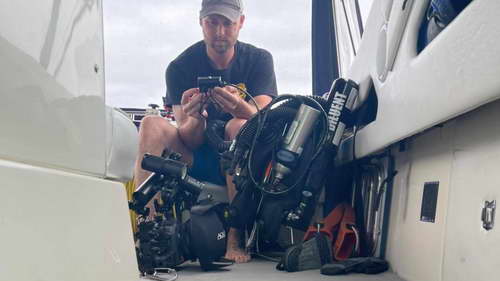
A closed-circuit rebreather is crucial to my shipwreck exploration and photography in the Great Lakes. It allows me to dive longer and deeper, while also being safer than traditional open-circuit scuba gear alone. The Meg is considered to be one of the absolute best brands in the rebreather industry.
Blueye Robotics Remote Operated Vehicle (ROV)
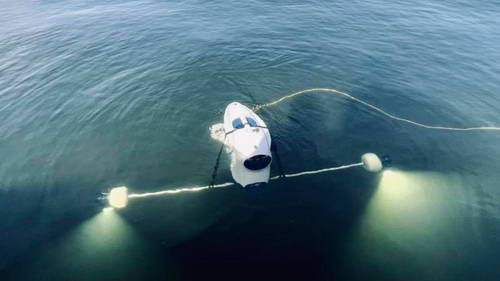
I use the Blueye Pro from Blueye Robotics in Norway. The Blueye ROV is where I derived the name “Blueyes Below” from, due to my own blue eyes, and one of my favorite pieces of equipment! The ROV allows me to explore, document, and preserve the deep and often out-of-reach shipwrecks that most would never see, in high-quality video. This essentially brings the shipwrecks “to the surface” for all to enjoy. My quality videos of deep shipwrecks are one of the things I am most known for.
Sony A7r3 With Aquatica Housing and Big Blue Lights
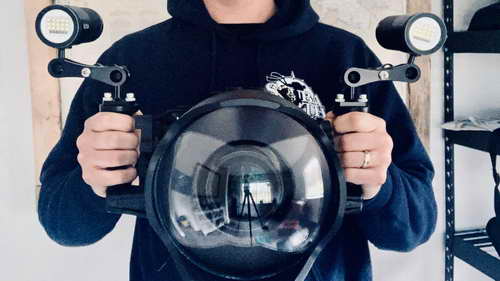
While I enjoy diving on Great Lakes shipwrecks by myself, I find it more valuable and enjoyable to share my experiences of these seldom-seen places with the world! My high-quality cameras, waterproof housing and dive lights are my most valuable assets in doing so.
As a young man first learning about photography and travelling in other countries, I had a desire to share experiences through my eyes with friends and family, and show just how amazing the world we live in is! This has now expanded to a worldwide audience thanks to social media.
Dji Mavic Pro 2 Drone

You might be thinking, “What does a drone have to do with Great Lakes SCUBA diving?” My DJI Mavic Pro 2 aerial drone allows a completely unique experience on the “out of the way” areas I tend to visit. Whether filming at a remote Great Lakes island with crystal clear waters or capturing shallow shipwrecks and lighthouses from above, this is one of the most utilized tools that I own!
Homebuilt Towfish
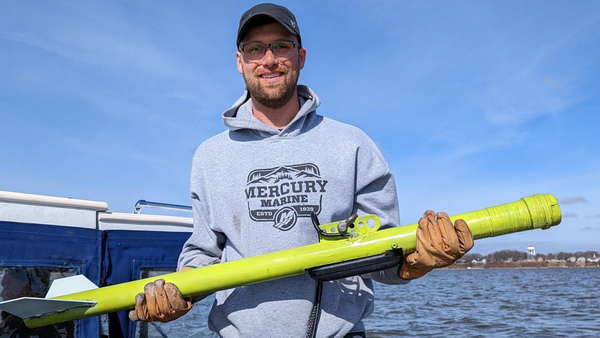
The Towfish “flies” in the water behind the boat. Depending on the length of the tether and the speed I am going, I can control how deep the Towfish is swimming. It gives me a clearer picture than my other sonar equipment because it’s not affected by waves and it’s closer to the target. I learned a lot building this one myself, and I plan to make improvements and build a second version in the future.
